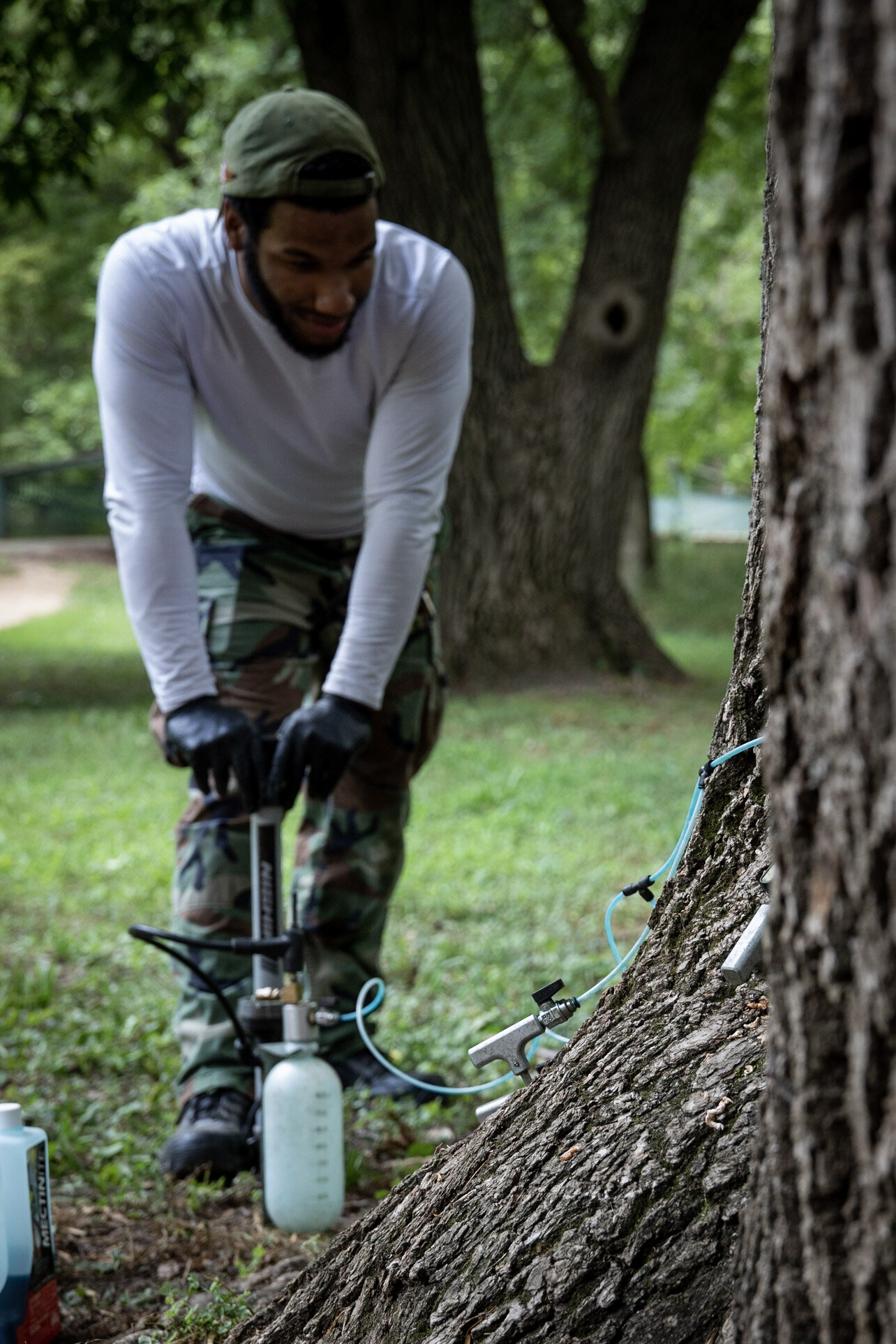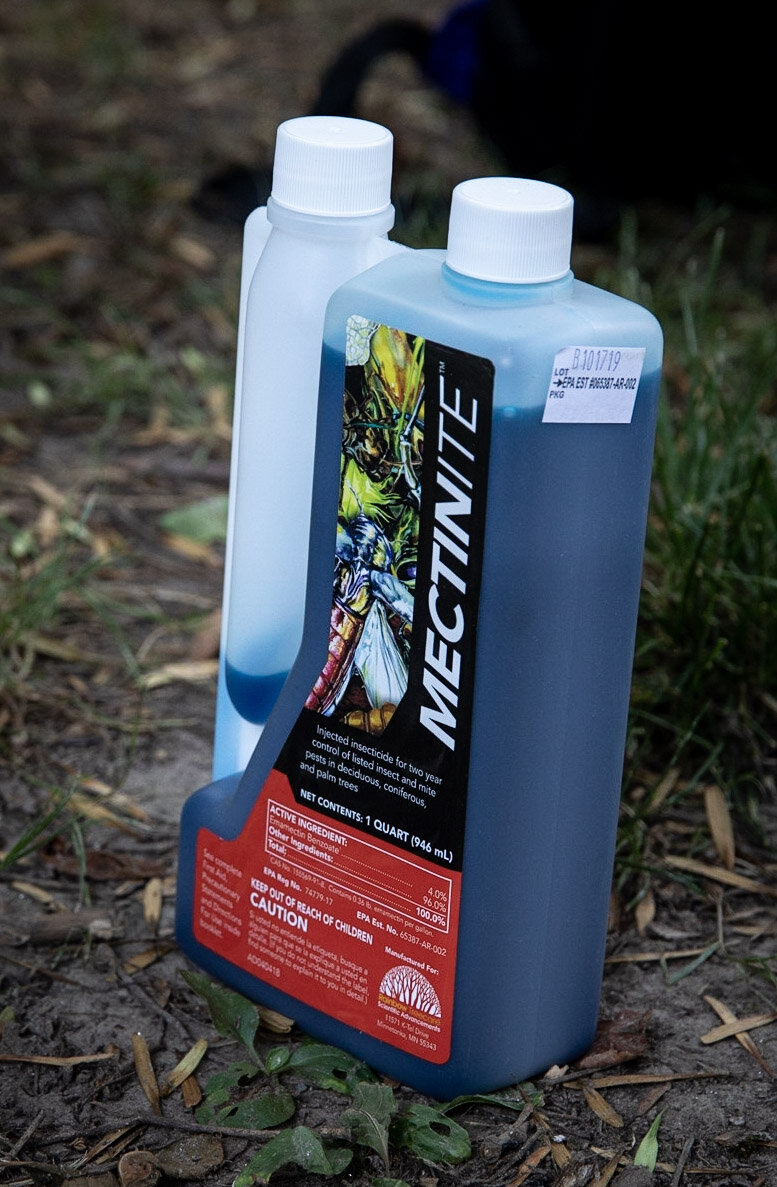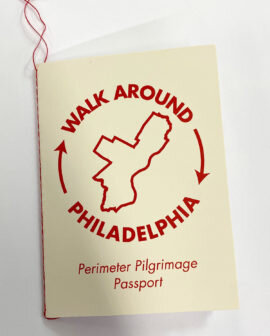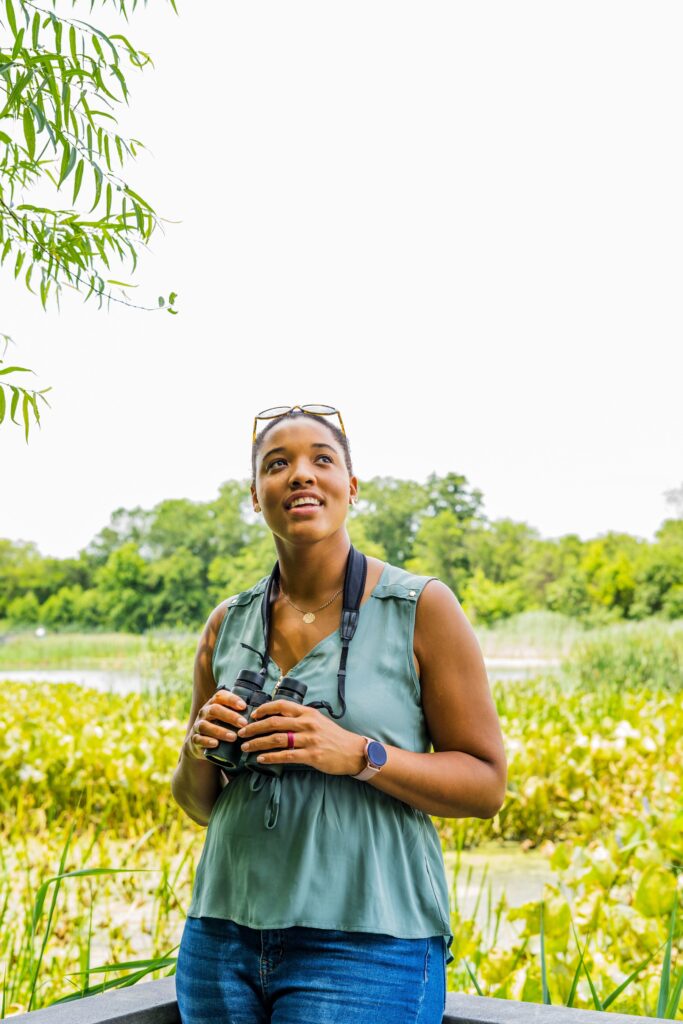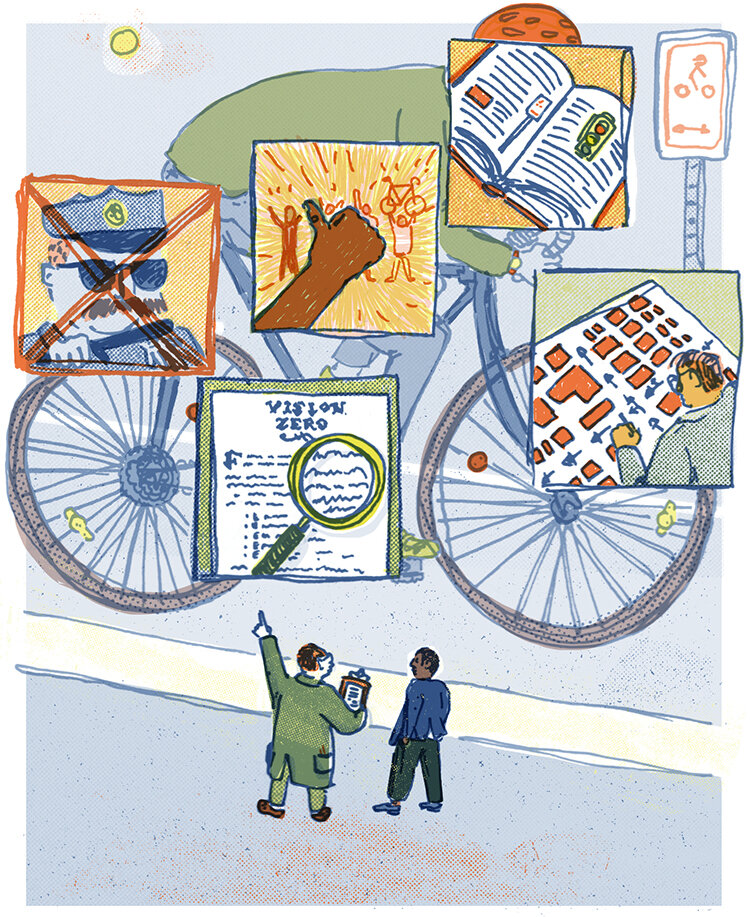Around 200,000 ash trees stand in the city of Philadelphia’s watershed parks. But in the next five to 10 years, most will be gone—killed by the emerald ash borer, an invasive species of beetle that has destroyed tens of millions of American ash trees in the Midwest and Northeast since it arrived in Detroit from China in 2002.
“They’re all doomed, pretty much,” says Dhan Parker, an environmental scientist with Philadelphia Parks and Recreation.
But Parker and other foresters around the region are working to save the species and mitigate the cost and damage of this pest. He and his staff have spent this summer doing their best to save a carefully selected list of 1,379 ash trees in the city’s parks.
The jewel-toned beetle with a bright green shell harms ashes by laying eggs beneath the trees’ bark. When they hatch, the larvae feed on the tree’s conductive tissue, which carries water and nutrients from the roots to the crown. While Asian ash trees are naturally resistant to the pest, American ashes are defenseless. The destruction takes place hidden under the bark and the symptoms of damage often first appear high in the crown of the tree, making it very hard to defend these trees from the pest.
It’s Parker’s hope that biannual treatments—a systemic insecticide injected into the tree’s roots—will help weather the wave of voracious insects wreaking havoc on the trees since the bugs were first spotted in Philly in 2016.
In addition to factors such as age and size, the lucky trees on the Parks and Rec
treatment plan were singled out to be saved because they’d pose a safety threat if they were killed by the emerald ash borer. Dead ash trees become extremely brittle and unstable, with a heightened risk of limbs or whole trees falling onto park pathways or roads and damaging property or hurting people.
While Parker is optimistic that the treatments will work, he and other tree workers and researchers in the region are looking further into the future of the species.
“The main goal for me is preserving the local genetics of the ash population, which is important—this might blow over in the future,” he says. “We’re collecting seed from these trees to store, so if the beetles ever run out of hosts, maybe the pest population will crash and we can replant.”
Once the dead trees are gone, the city’s work still isn’t done. Ashes make up a relatively small portion of the trees in city parks—around 7 percent, Parker estimates—but the loss of a few hundred thousand trees would still be significant. Aside from hazardous dead ash trees, the spaces created by the loss of mature trees provide an opening for invasive trees to grow in their place. Once affected ash trees are removed, city arborists will identify areas for reforestation of native species to shade out the encroaching invasives.
It’s not only the urban canopy that’s in danger as ash trees bite the dust. More than 150 native lepidoptera species—butterflies and moths—rely on ash trees for food and habitat, and the seeds provide food for many species of birds and small rodents.
The emerald ash borer can create problems for homeowners, too. Just as municipalities and arboreta have to balance the cost of treating and saving the trees against the risk of potential damage and cleanup costs, residents have to weigh the same decision.
While treating the trees in hopes of saving them can be costly, it may make more financial sense in the long run.
“They’ve found in areas where a lot of ash trees have been lost, the main thing that happens is people’s air-conditioning bills go up,” says Tony Aiello, director of horticulture and curator at the University of Pennsylvania’s Morris Arboretum in Chestnut Hill. “That’s part of the calculus people need to consider.” And, of course, there’s the danger of a dead or dying ash tree falling on a person or structure on the property. If a tree must be removed, it’s typically more affordable to do so while it’s still relatively healthy.
There is hope for the American ash, though: in addition to spot-treating key ash stands with systemic insecticides, arborists and forestry officials across the state are identifying stands of what they call “lingering ash”—native trees that have somehow withstood the emerald ash borer’s onslaught—in hopes that they might be able to use seed from those trees to breed
resistant varieties in the future.
And those dead trees don’t go to waste. The city is making good use of the wood.
Trees that have fallen to the emerald ash borer are identified using a geographic information system (GIS) app so that city crews can remove them before they become hazardous. Then they go to the Organic Recycling Center in Fairmount Park, where they’re assessed to see which trees can be turned into lumber.
“There are so many factors that have to line up for a tree to be salvageable,” says Daniel Lawson, sustainability and quality control manager at Parks and Rec. “It seems simple enough, but you look around and start to realize how many trees diverge from that. You have to do the math, figure out what sizes to generate, and how much you can salvage.”
Only straight, even, sections of trees—think telephone pole-shaped trunks—can be milled into boards that can then be used as building material. The rest of the trees, which may include rotten or damaged portions, are ground up into wood chips or mulch.
Lawson estimates that the city was able to have 9,000 board feet of reclaimed lumber cut by a mobile miller over just two days. Though the number might seem
impressive, “it’s probably less trees than you’re thinking,” he says, “but that highlights how amazing of a resource that these trees are.” One good 50-foot tree can be made into all the cubbies and bookcases in a rec center, for example, or enough benches to fill the beer garden in Eakins Oval.
Right now, the program Lawson heads is developing a plan to systematize the reclaiming of quality wood from ash and other trees taken down by crews in city parks. So far, the program has been opportunistic, bringing in a mobile sawmill for a couple of days at a time when there was enough good wood to process, but Lawson sees the potential for much more—maybe even offering reclaimed wood from city parks to local carpenters and hobbyists alike to build furniture and other projects.
“It’s very preliminary, but we’re breaking down the market and what the wood waste stream looks like in our city and our region—where we can plug in and optimize the process and upgrade the products that come from wood waste,” Lawson says. “If we can successfully come up with an awesome system to rescue these trees, taking what is going to be an incredible challenge for our local ecosystem and turning into a new resource, it will be a testament to the resilience of our community.”

